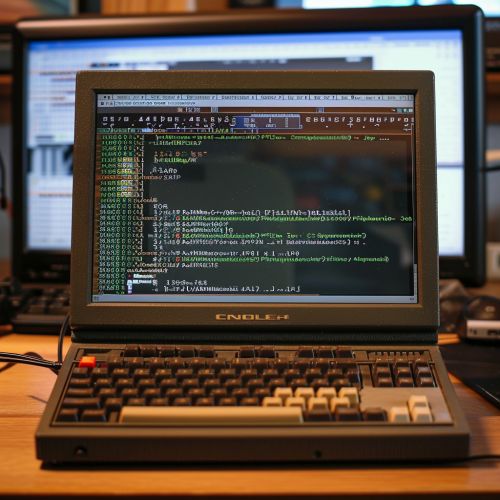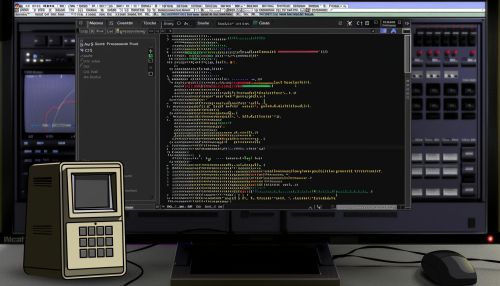ANSI C: Difference between revisions
(Created page with "== Overview == ANSI C, also known as C89 and C90, is a standardized version of the C programming language. It was established by the American National Standards Institute (ANSI) in 1989, and later by the International Organization for Standardization (ISO) in 1990. ANSI C is a statically typed, compiled language known for its efficiency and control over hardware, making it a popular choice for system software such as operating systems and compilers. <div...") |
No edit summary |
||
| Line 2: | Line 2: | ||
[[ANSI C]], also known as C89 and C90, is a standardized version of the [[C programming language]]. It was established by the [[American National Standards Institute]] (ANSI) in 1989, and later by the [[International Organization for Standardization]] (ISO) in 1990. ANSI C is a statically typed, compiled language known for its efficiency and control over hardware, making it a popular choice for system software such as operating systems and compilers. | [[ANSI C]], also known as C89 and C90, is a standardized version of the [[C programming language]]. It was established by the [[American National Standards Institute]] (ANSI) in 1989, and later by the [[International Organization for Standardization]] (ISO) in 1990. ANSI C is a statically typed, compiled language known for its efficiency and control over hardware, making it a popular choice for system software such as operating systems and compilers. | ||
[[Image:Detail-78937.jpg|thumb|center|Screenshot of a simple ANSI C code written in a text editor.|class=only_on_mobile]] | |||
[[Image:Detail-78938.jpg|thumb|center|Screenshot of a simple ANSI C code written in a text editor.|class=only_on_desktop]] | |||
== History == | == History == | ||
Latest revision as of 06:49, 16 May 2024
Overview
ANSI C, also known as C89 and C90, is a standardized version of the C programming language. It was established by the American National Standards Institute (ANSI) in 1989, and later by the International Organization for Standardization (ISO) in 1990. ANSI C is a statically typed, compiled language known for its efficiency and control over hardware, making it a popular choice for system software such as operating systems and compilers.


History
The C programming language was initially developed at Bell Labs by Dennis Ritchie in the early 1970s. However, as the language spread to various machines and operating systems, it began to change and diverge. This led to the need for a standard version of C, which would ensure compatibility and portability across different systems. The ANSI X3J11 committee was formed in 1983 to establish this standard, which was eventually published in 1989 as ANSI C.
Language Features
ANSI C introduced several new features and improvements over the original C language. These include function prototypes, which provide type checking for function parameters, and a standardized library, which includes a set of common functions available to all C programs. ANSI C also introduced improved syntax for structures and arrays, and standardized the use of the 'void' keyword.
Syntax and Semantics
The syntax of ANSI C is based on a set of keywords and symbols used to define the structure of a program. These include data types, operators, control structures, and functions. The semantics of the language define the meaning of these syntactic elements, and how they interact with each other and the underlying hardware.
Data Types
ANSI C includes several basic data types, including 'int' for integers, 'float' and 'double' for floating-point numbers, 'char' for characters, and 'void' for indicating no value or type. It also supports derived data types such as arrays, structures, unions, and pointers.
Control Structures
Control structures in ANSI C include 'if', 'else', 'switch', 'while', 'do-while', and 'for' for conditional execution and loops. It also includes 'break' and 'continue' for controlling loop execution, and 'goto' for unconditional jumps.
Functions
Functions in ANSI C are defined using the 'def' keyword, followed by the function name, parameters, and body. Functions can return a value using the 'return' keyword, or be declared as 'void' to indicate no return value.
Standard Library
The ANSI C standard library includes a set of common functions for tasks such as input/output, string manipulation, memory management, and mathematical operations. These functions are defined in a set of header files, which can be included in a C program using the '#include' directive.
Portability and Compatibility
One of the main goals of ANSI C was to ensure portability and compatibility across different systems. This means that a program written in ANSI C should compile and run correctly on any system that supports the ANSI C standard. However, due to differences in hardware and operating systems, there may still be some differences in behavior.
